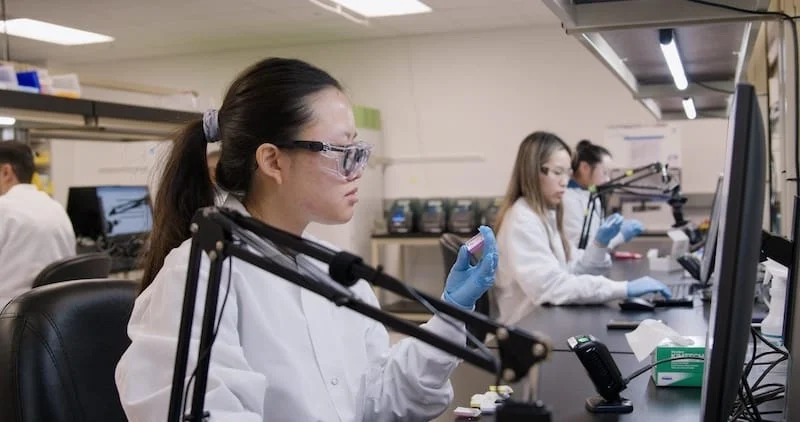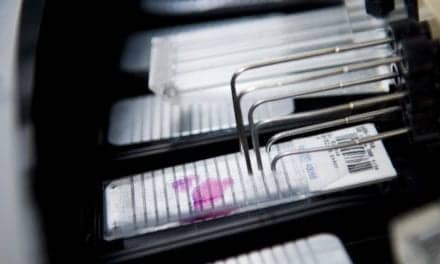Summary:
Personalis, Inc. unveiled promising new clinical data from the PREDICT DNA and SCANDARE studies at ASCO 2025, demonstrating that its ultrasensitive NeXT Personal ctDNA test can effectively monitor and predict neoadjuvant therapy response in triple negative breast cancer patients.
Takeaways:
- Ultrasensitive Detection: NeXT Personal detects ctDNA at extremely low levels (1–3 ppm), enabling accurate monitoring of therapy response.
- Risk Stratification: ctDNA clearance post-therapy correlates with low recurrence risk, even in patients with residual disease.
- Clinical Impact: These findings support the potential of ctDNA testing to guide personalized treatment decisions and justify future insurance reimbursement.
Personalis, Inc., a provider of advanced genomics for precision oncology, has announced the presentation of new clinical results from the PREDICT DNA and SCANDARE studies highlighting the capabilities of its ultrasensitive NeXT Personal circulating tumor DNA (ctDNA) blood test for monitoring and predicting neoadjuvant therapy (NAT) response in triple negative breast cancer (TNBC), one of the most aggressive types of breast cancer.
“Many triple negative breast cancer patients receive neoadjuvant therapy prior to surgery as standard of care. The data from these two studies independently suggest that an ultrasensitive ctDNA assay like NeXT Personal could help these patients better understand their risk of relapse, with the potential to help inform the need for additional therapy,” says Richard Chen, MD, chief medical officer and executive vice president, R&D at Personalis. “We believe this data, once published, can form the basis for seeking reimbursement coverage for neoadjuvant therapy monitoring in breast cancer. We are excited to continue to work with leading collaborators to expand the data around the use of NeXT Personal in breast cancer with the goal of helping breast cancer patients optimize their care.”
PREDICT DNA Study Results Shared at ASCO Annual Meeting
Results from the PREDICT DNA study were presented on June 2, 2025, by Natasha Hunter, MD, University of Washington, at the American Society for Clinical Oncology (ASCO) 2025 Annual Meeting in Chicago in an oral presentation titled “Circulating tumor DNA, pathologic response after neoadjuvant therapy, and survival: First results from TBCRC 040 (the PREDICT DNA trial).”
“The PREDICT DNA study prospectively evaluated ctDNA in early-stage patients with HER2-positive and triple negative breast cancer. The trial was initiated a decade ago and accrued 228 patients across 22 sites in the United States, and was statistically designed and powered for analysis of ctDNA to predict for pathologic complete response (pCR), and whether ctDNA could be a prognostic test to identify patients at high vs. very low risk for recurrence,” says Ben Park, MD, PhD, Vanderbilt School of Medicine. “We partnered with Personalis because of their technology’s ultrasensitive detection of ctDNA down to 1 to 3 parts per million. Our results demonstrate that patients who “clear” their ctDNA after upfront chemotherapy have excellent outcomes that mirror those with pCR, identifying a group of patients who, despite having residual disease at the time of surgery, will be at extremely low risk for recurrence. Conversely, those with detectable ctDNA after upfront chemotherapy are at a much higher risk of recurrence, and serial ctDNA measurements after surgery can help identify patients who may benefit from either escalation or de-escalation of therapies. We are truly excited by these results as they will allow us to more precisely risk-stratify patients with breast cancer in future trials and clinical practice.”
Key findings included:
- ctDNA status after completion of NAT (post-NAT) was highly prognostic for relapse-free survival (RFS).
- Patients with ctDNA detected post-NAT were ~10 times more likely to relapse than patients who were ctDNA negative.
- Detection of ctDNA post-NAT was more predictive of recurrence than pCR.
- Patients who did not have detectable post-NAT ctDNA had excellent outcomes regardless of pathologic response.
- Preliminary analyses indicate that patients who had post-surgical ctDNA detected were >85 times more likely to experience disease recurrence.
- 48% of post-NAT ctDNA detections were <100 PPM, highlighting the importance of NeXT Personal’s ultrasensitive performance
- Overall, the results suggest that ultrasensitive ctDNA detection in patients with TNBC after completion of NAT and prior to surgery may be used as a prognostic marker, independent of pCR, to guide clinical decision making for additional adjuvant therapies
Second Study Results Presented
Luc Cabel, MD, PhD, Institut Curie, Paris, presented results from a second study titled “Ultrasensitive circulating tumor DNA (ctDNA) detection for prognostication in triple-negative breast cancer (TNBC) post-neoadjuvant chemotherapy (NAC).” This study included 86 patients with early stage (Stage I-III) TNBC receiving neoadjuvant therapy. Key findings included:
- ctDNA was detected in 100% (84/84) of pretreatment baseline plasma samples.
- The majority of ctDNA detections during NAT (51%) and post-NAT (55%) were in the ultrasensitive range below 100 PPM of ctDNA.
- Post-NAT ctDNA status was highly prognostic. Patients with ctDNA detected post-NAT were ~36 times more likely to have a distant relapse than patients who tested negative.
- For patients who were non-pCR, ctDNA negative patients were 93% less likely to relapse than ctDNA positive patients.
- ctDNA status can be combined with pCR status to assess patient distant relapse risk following NAT.
“Our results uncover the clinical need for ultrasensitive MRD testing, and pave the way for ctDNA-based adjuvant therapy decisions in early triple negative breast cancer, “says François-Clément Bidard, MD, PhD, one of the Institut Curie lead investigators on the study.
Featured Image: an ultrasensitive ctDNA assay like NeXT Personal could help these patients better understand their risk of relapse, with the potential to help inform the need for additional therapy. Image: Personalis





